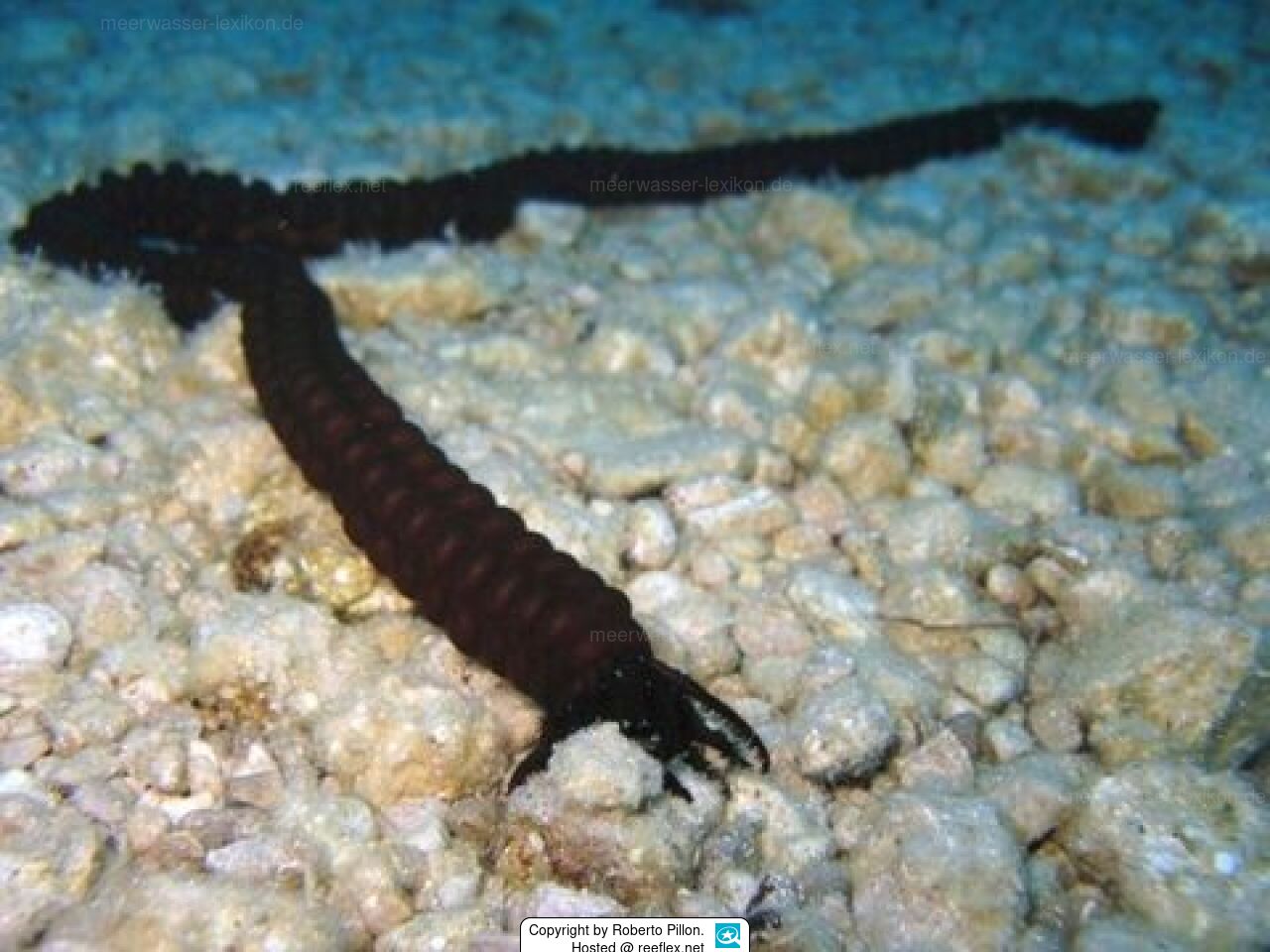Info
Synaptula reciprocans (Forsskål, 1775)
Synaptula is a genus of small, worm-like sea cucumbers that live as commensals on other invertebrates. They mainly colonize sponges, but also gorgonians, large algae species, and calcareous algae. The various Synaptula species often live on only one specific host and in some cases can only be identified by the identity of the host animal.
Worm sea cucumbers feed on sediments that adhere to their hosts. They utilize the microscopic algae and diatoms contained in the sediments.
Synaptula reciprocans is one of 29 species of the genus Synaptula (WoRMS 2017) found in the tropical shallow sublittoral zones of the Red Sea, Indo-Pacific, and also in the Mediterranean Sea.
The species is commonly found in shallow water on rocky and sandy substrates.
This sea cucumber is a Lessepsian migrant that was not originally native to the Mediterranean but is now found in the eastern and southern Mediterranean.
Synaptula reciprocans was first reported from the Mediterranean in 1986.
Synonyms:
Chondrocloea (Synapta) striata var. incurvata Vaney, 1905
Chondrocloea reciprocans (Forskål, 1775)
Fistularia reciprocans Forsskål, 1775
Holothuria glutinosa Lamarck, 1816
Synapta orsinii Ludwig, 1887
Synapta reciprocans Forskål, 1775
Synaptula is a genus of small, worm-like sea cucumbers that live as commensals on other invertebrates. They mainly colonize sponges, but also gorgonians, large algae species, and calcareous algae. The various Synaptula species often live on only one specific host and in some cases can only be identified by the identity of the host animal.
Worm sea cucumbers feed on sediments that adhere to their hosts. They utilize the microscopic algae and diatoms contained in the sediments.
Synaptula reciprocans is one of 29 species of the genus Synaptula (WoRMS 2017) found in the tropical shallow sublittoral zones of the Red Sea, Indo-Pacific, and also in the Mediterranean Sea.
The species is commonly found in shallow water on rocky and sandy substrates.
This sea cucumber is a Lessepsian migrant that was not originally native to the Mediterranean but is now found in the eastern and southern Mediterranean.
Synaptula reciprocans was first reported from the Mediterranean in 1986.
Synonyms:
Chondrocloea (Synapta) striata var. incurvata Vaney, 1905
Chondrocloea reciprocans (Forskål, 1775)
Fistularia reciprocans Forsskål, 1775
Holothuria glutinosa Lamarck, 1816
Synapta orsinii Ludwig, 1887
Synapta reciprocans Forskål, 1775







 Roberto Pillon, Italien
Roberto Pillon, Italien








